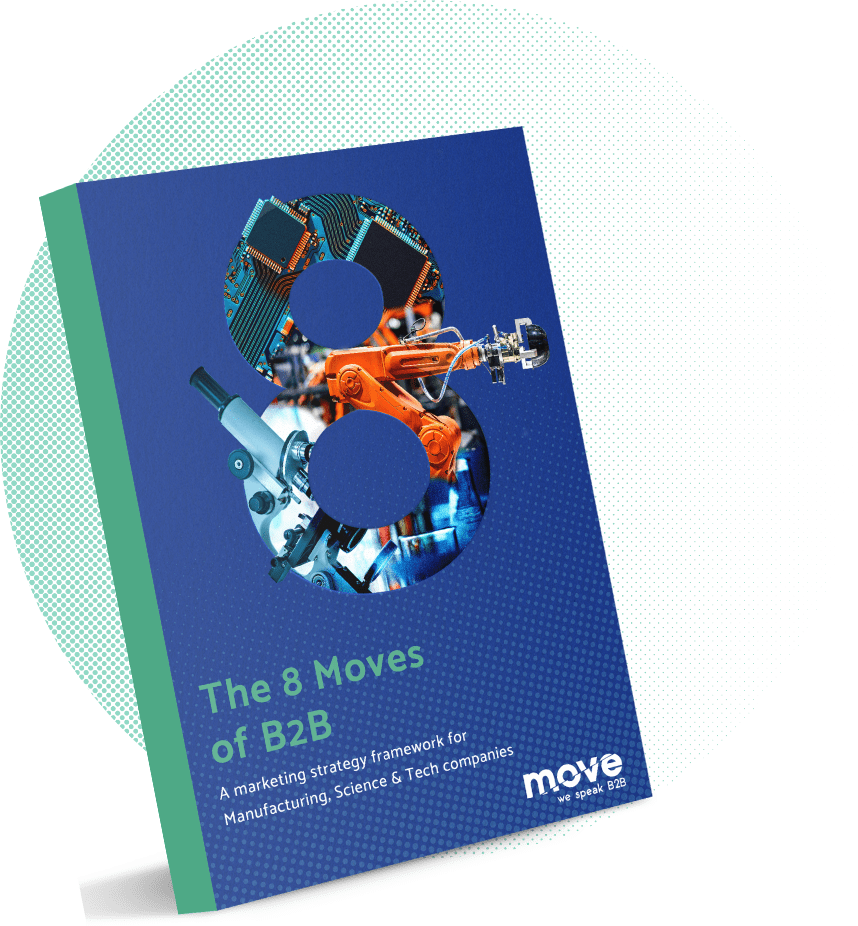Your Guide to LinkedIn as a B2B Company
One thing most people don’t know about LinkedIn, the social network for professionals, is that it’s the oldest of the major social media platforms. This year, in 2021, LinkedIn sees in its 18th birthday, after officially launching on May 5th 2003, nine months before Mark Zuckerberg launched Facebook at Harvard.
Used correctly, LinkedIn has the potential to be an invaluable tool for B2B companies, with more than 700 million users in 200 countries and available in 24 languages. There are also 63 million decision makers on LinkedIn, making the platform like a 24/7 networking event with the whole world – except there’s less awkward small talk and no disappointing finger food. So, how can you get the best from LinkedIn for your B2B company? This guide will help!
Where to start with LinkedIn B2B Marketing?
As is the case with any other social media platform, LinkedIn is another place we can mark our digital footprint and let the world know that we’re here and why we exist. The difference here is that while Facebook is saturated with family and friends, Instagram is drowning in influencers, and TikTok is, well, simply distracting, LinkedIn cuts right through to those who are usually wearing their business hats.
The basics require a professional profile. Here you will list work experience, education, charitable activity, and so on. You can give your profile more authority by adding interactive capabilities, such as:
- Status updates
- Expertise
- Articles
- Presentations
- Videos
- Recommendations (by requesting them from your connections)
- Certifications
Next up, you need to create your company page. Getting this part right is really important as this could be your first impression, and you know what they say about those! So you’ll need to include:
- Essential information about products and services
- A banner image (it’s good to be consistent with your website and other socials)
- Profile image (better to stick to the company logo)
- Description
- Career opportunities
- Generic regular posts
Who cares?
It’s important to define your audience and your goals; having a clear strategy and understanding your audience is critical to performance on any digital marketing channels. Knowing who you’re talking to will not only make your life easier, but it will also give your message a more streamlined and authentic feel. LinkedIn provides Website Demographics, which make it easier for you to understand your audience by allowing you access to valuable audience insights like job titles, company names etc. Having this information means you can deliberate which types of content are displayed to different audiences and then customise your content and tailor to your strongest prospects.
Deciding on your objectives is also key to success. Are you using LinkedIn to generate more leads or increase brand awareness? Defining this will help you to determine what is relevant to post where not to use your valuable time. LinkedIn’s lead conversion rate is 3x higher than other major advertising platforms, including Google Ads.
The work begins
Make sure your LinkedIn business page is search-friendly, by adding keywords that your target audience is actively searching for (don’t skip this step – it matters!). Stick to SEO (search engine optimisation) best practice. Google will preview around 150 characters of text in its results, so it’s important you get relevant information into your description to improve your chances of ranking. Your desired audience won’t find you by accident, so don’t sit back and relax just yet, page promotion is something that needs to be taken seriously. The best ways to get yourself noticed are linking out from your website to your page, sharing the page across any other social media channels you may have, promoting to newsletter subscribers, linking through from your blog, and even running paid ads on the platform. These are all simple yet effective ways to build a following on your LinkedIn account.
LinkedIn B2B Marketing Best Practises
Marketing your business via LinkedIn isn’t a new phenomenon and so there are tried and tested strategies – and lots of them! Here are some of the best practice examples to start you off:
- Post regularly – those who are successful on any social platform are the ones that remain active with fresh content and an authentic voice. Sometimes it can be hard to come up with consistently engaging content. But not to worry, as LinkedIn have their own Content Suggestions tool. This tool allows you to target what your audience is currently engaging with by using specific filters to define your search. For LinkedIn B2B marketing, we always suggest a few content subjects: educational content such as blog links, job postings, company updates, industry news articles and commercial posts including product and service benefits. Having a mix is vital to keep users engaged.
- Create a posting schedule – this links well with the above point, keeping organised and posting on schedule can determine the success of a campaign. It’s been said that posting a status update three to four times per week and posting around two long form pieces of content per month is the ideal balance for your network. Timing is everything, so it’s important to consider different time zones but looking at data between 10am and 12pm is the best time to post on LinkedIn, with Wednesday being the best day.
- Mix it up – experiment with your posts, you might not know what kind of post will sit best with your target audience, so you should try out different styles. Think emojis, images, video content, long and short posts, and so on. Video gets 5x more engagement on LinkedIn than regular posts and live video gets 24x more!
- Build relationships – this is one of the main reasons this platform exists, so don’t forget that building your brand goes hand-in-hand with building relationships. Make the most out of LinkedIn by trying out the community features, which allow you to communicate with other users, clients or partners and expand your connections. Try joining groups that focus on your field, interest, or expertise or connecting with “influencers” or thought leaders. By engaging with topical and newsworthy posts and discussions, you will get exposure as a contributor.
- Use industry-specific hashtags – on LinkedIn, you’re able to search the hashtag follower volume in the search bar to see how many users have asked to receive updates from posts tagging that specific hashtag. This is a great way to see how many potential users your post can be shown too. However, as with most B2B marketing tactics, it’s better to focus in on quality over quantity. Even if a hashtag relating to your industry has a lower search volume, say a few hundred, that’s ok! It’s all about targeting those niche users who are definitely going to be interested in your content.
- Get your internal team involved – your team should be your biggest supporters. To increase the reach of your LinkedIn posts, in particular your company page updates, encouraging your team to like, comment and share your posts increases the reach. This is because it gets shown to all of their connections.
Ads & Targeting
You may already be well acquainted with social media advertising, but did you know that LinkedIn has some of the best targeting capabilities available for paid advertising? You’re able to choose from over 20 different audience attribute categories, including company size, job title, job seniority and more – fundamental for targeting those niche audiences in the industrial, science and tech sectors. There are a variety of ad formats, including:
- Sponsored Content – this appears directly on the feed of professions you have targeted and comes in three formats: carousel ads, video ads and single image ads.
- Message Ads – this is where you can reach out to prospects via the messenger service, allowing for conversations to start.
- Dynamic Ads – these ads will personalise for every member within your target audience, they will typically use their profile, company name or job title. They come in the format of a follower ad, spotlight ad and job ads.
- Text Ads – a more classic pay-per-click (PPC) or cost-per-impression (CPM) ad style.
Once you’ve launched your ads, it’s important to remember to keep track of your analytics and measure your performance – this goes for your organic content too! LinkedIn’s own analytics dashboard is easy to follow and gives you all the information you need. It’s especially important to keep an eye on the click-through rate (CTR) and the engagement rate. These allow you to understand how each post is doing in comparison to each other.
Get started with your own LinkedIn strategy today! Having a strong LinkedIn game will be become a vital weapon in your marketing armoury and one you can’t believe you lived without before. For more top tips on using LinkedIn as a B2B company, then get in touch with the team here at Move on +44 (0) 161 359 4363 and let’s start the conversation! You can also visit our website and see how else we can help.


